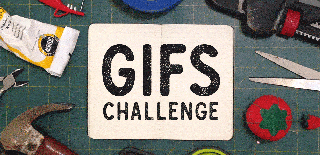Introduction: Light-up LED Cuff / Bracelet With Magnetic Switch (e-textile)
When I was invited to come into a local primary school art classroom, to teach all 430+ third through fifth-grade students how to create their own electronic wearables (also known as e-textiles), I jumped at the chance!
In collaboration with the art teacher, who was eager to offer her kids an engaging challenge, we decided that empowering students to design and create their own light-up cuffs / bracelets would be a great way to reinforce the scientific concepts of circuitry, switches, and magnetism, while allowing their creative juices to flow.
And boy did this crew rise to the occasion!
In addition to demonstrating a cost-effective way to bring e-textile making to large groups (within limited time constraints), this Instructable will share classroom-tested workflow strategies for integrating science, technology, engineering, and art.
Step 1: Gather Tools & Supplies
While most LED cuff/ bracelet designs found online incorporate a sewable battery holder, the expense of providing one for each person is generally cost-prohibitive for many large groups. As a result, this design substitutes ring magnets to serve two functions: as a closure and a switch!
Supplies
3V Coin Cell Batteries (1 per person)
Conductive Thread (1 - 1.5 yards per person). Each large spool contains 360 yards. We used 2 spools for 430 students and had some left over.
Ring Magnets (2 per person). Purchase extras to account for breakage.
5mm LEDs (1-3 per person). We used fast-flashing LEDs, but we suggest a variety of colors.
Multicolored 9" X 12" Felt Squares (approximately 1 piece for every 4 people)
Miscellaneous decorations (pom-poms, plastic jewels, googly eyes)
Glue Sticks
White Glue (enough for your group to share)
Tools
Needles (1 per person). These may be shared between groups.
Bees wax
Needle-nosed Pliers
Scissors (1 per person). These may be shared between groups.
Glue gun (1 or 2 total).
Black or Red Sharpie Markers (1 or 2 total)
Baggies (1 per person)
Pin Cushions/ Sponges. We placed one on each table to be shared between every 4-5 students.
Needle threaders (optional)
Popsicle Sticks (optional) for spreading glue
Step 2: Workflow: Prep LEDs
In order to make the 5mm LEDs easier for participants to sew, color code and bend the legs in advance.
Decide whether you want to mark the positive leg (anode) or the negative leg (cathode) of each LED. It's overkill to mark them both.
Use a red Sharpie to color the longer (positive) leg of the LED red OR a black Sharpie to color the shorter (negative) leg of the LED black.
Step 3: Workflow: Prep Baggies
To help with organization, prepare a baggie for each person in your group that contains a coin cell battery (still inside the wrapper) and one or more LEDs (the number depends upon your project).
Have participants put their names on the bags and use them to store their projects as they work. If you are working in a school setting, collect the baggies at the end of each class, reminding students to return their needles to the pin cushions on each table.
Step 4: Workflow: Prep Felt
In advance of your class or workshop, cut felt strips between 2" and 2 1/2" wide and store them for easy access. Account for a 1" to 1.5" overlap in the length.
Most of our strips were 2 1/4" wide by 9" long, but we had a pile of longer strips available for those with larger wrists.
Round one end of each felt strip with scissors.
Step 5: Workflow: Prep Needles & Thread
Because there was very little time to prepare between classes, we came up with a few strategies to streamline our process.
Rather than having all of the participants thread their own needles at the start of each class (which could take our younger students quite a long time), we prepared pin cushions (sponges) for each table that contained several threaded needles.
For each student, we cut 12-15" pieces of thread, which we ran through bees wax. This helped to keep the conductive thread from curling, twisting, and knotting.
Then, we threaded the needles and knotted only ONE end of the thread.
Step 6: Preteaching
In order to devote two complete classes (approximately 45 minutes each) to building circuits with me, we determined that it would benefit students to have at least one class prior to my visit to brainstorm their artistic intentions and review basic circuitry.
Each student was asked to come up with a minimum of two design ideas that would incorporate light into their artwork (with the understanding that their ideas might change).
Workflow Tip:
The templates shared here are a good way to review the concepts of simple and parallel circuits, while encouraging students to think actively about ways to meaningfully integrate one or more LEDs into their work. You may want to have students draw in the LED(s) as part of their designs. Of note, all of our students created simple circuits, as this was an introductory activity. As an extra challenge for older students, you may wish to offer an option to create parallel circuits incorporating two or more LEDs.
Step 7: View Video Tutorial
Step 8: Start Sewing Negative Leg of LED and First Magnet on Front
On the first sewing day with each group, we briefly reviewed simple circuits with the students.
Using a document camera and a projector, we demonstrated how to sew five to six loops of conductive thread around the negative leg of their LED, followed by a running stitch. Wrapping around five to six times ensures a more robust electrical connection.
We demonstrated how to use one hand (not the one holding the needle) to hold down the positive leg of the LED while the other hand sewed around the negative leg of the LED.
Next, we instructed students to bring the long tail of their remaining thread through to the front side of the fabric, on the flat edge of the felt (not the rounded one). Students should be reminded not to cut that tail, because the magnet will be attached with it.
Workflow Tip:
Once most of the group had gotten to this point, they were each given ONE magnet, and they were shown how to sew the magnet to the front side of the fabric.
Rather than worrying about how many stitches they needed to count, we encouraged students to focus on making their magnets look like the spokes of a wheel, by sewing short, tight stitches all the way around it. (See diagram).
Once the first magnet was sewn on tightly (and looked like a bike wheel) we helped students tie a knot on the back of the fabric. We later reinforced the knots with a dab of hot glue or clear nail polish.
Most of the younger students did not finish sewing their first magnets on until the next class. At the end of each class, we had students place their felt pieces into their baggies. We also ensured that all of the needles were returned to the pin cushions/ sponges.
Step 9: Sew Positive Leg of LED
The next step is to thread the needle with a new piece of thread in order to secure the positive leg of the LED.
It's important that the thread from the negative leg does not touch the thread used to sew the positive leg, in order to prevent a short circuit.
Starting from the back side of the fabric, bring the needle up through the positive (red) leg of the LED. Sew around the leg between five and six times.
Sew a running stitch to within an inch of the the rounded fabric edge. Ensure that the tail comes out the back side of the fabric (the side that does not have the LED and magnet on it).
Workflow Tip:
Some students may need a little help ensuring that the polarity of their magnets is correct before sewing them down. It's a good a idea to have partners help one another, or wait for assistance from an adult or student volunteer. It's also a good idea to let students know that ring magnets can break unexpectedly if they are allowed to snap closed with force. Ring magnets can be fragile.
Step 10: Check Polarity of Second Ring Magnet
Before sewing the second ring magnet onto the back side of the fabric, it's important to test the magnet's polarity. The best way to do this is by touching the second magnet with the one that's already been sewn down.
(If the GIF image above isn't moving, double click it to select and view an animated example).
Then, pretend that you are closing the cuff around your wrist, to see where you need to sew the second magnet on. Carefully slide the magnet off of the first one, remembering which side was attracted to the magnet you already sewed down. Place the side that was NOT attracted to the magnet you already sewed down to the back of the fabric, so that the magnets will attract one another when the fabric loop is closed around your wrist.
When sewing around the magnet, make the stitches resemble the spokes of a wheel. Make a knot on the fabric backing the magnet and tie a knot. Knots should be sealed with a dab of hot glue or some clear nail polish.
Step 11: Test & Insulate Circuit
Once both magnets have been sewn on and the thread has been knotted, trim off any loose ends. Insert the battery between the magnets with the positive leg of the LED touching the positive side of the battery and the negative leg of the LED touching the negative side of the battery.
If the light turns on, congratulations!
If the light doesn't turn on, you'll need to do some troubleshooting.
Are there any loose pieces of conductive thread?
Is the thread from the positive leg of the LED touching the thread from the negative leg, causing a short circuit?
Is the battery inserted backwards? Try flipping it around to test this.
Did you wrap around each leg of the LED 5-6 times to ensure to secure electrical connection?
Workflow Tip:
To help streamline the insulation process, and to help prevent accidental burns, students lined up to have an adult insulate the backs of their circuits AFTER they verified that their circuits worked properly.
Step 12: Add Artwork & Embellishments
Once the circuits are working, and the back sides of each cuff have been insulated, it's time to add artwork and embellishments to finish off each design!
Encourage students to refer back to the sketches they made earlier.
Workflow Tip:
White glue may be used to add fabric and other embellishments to the front sides of each cuff. Popsicle sticks work well for spreading glue and keeping hands relatively clean. Designating a shelf where wet cuffs can dry, undisturbed, is a good idea. Embellishments may also be added with a glue gun under adult supervision.
SAFETY WARNING: If swallowed, coin cell batteries and ring magnets are extremely dangerous. Special care should be taken to keep these items away from babies and toddlers.

First Prize in the
Teachers Contest 2017

Participated in the
GIFs Challenge 2017

Participated in the
Sew Cool Contest














